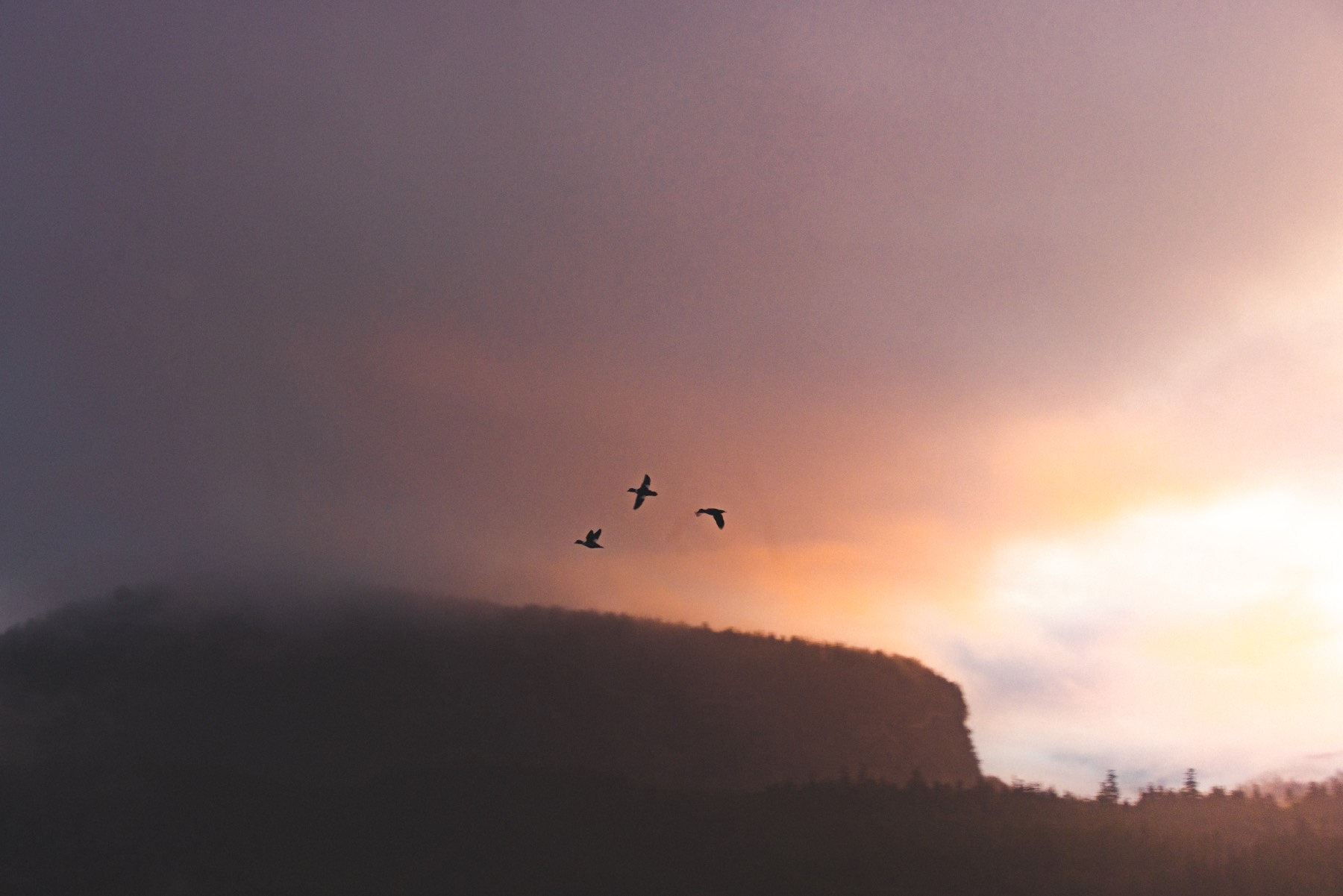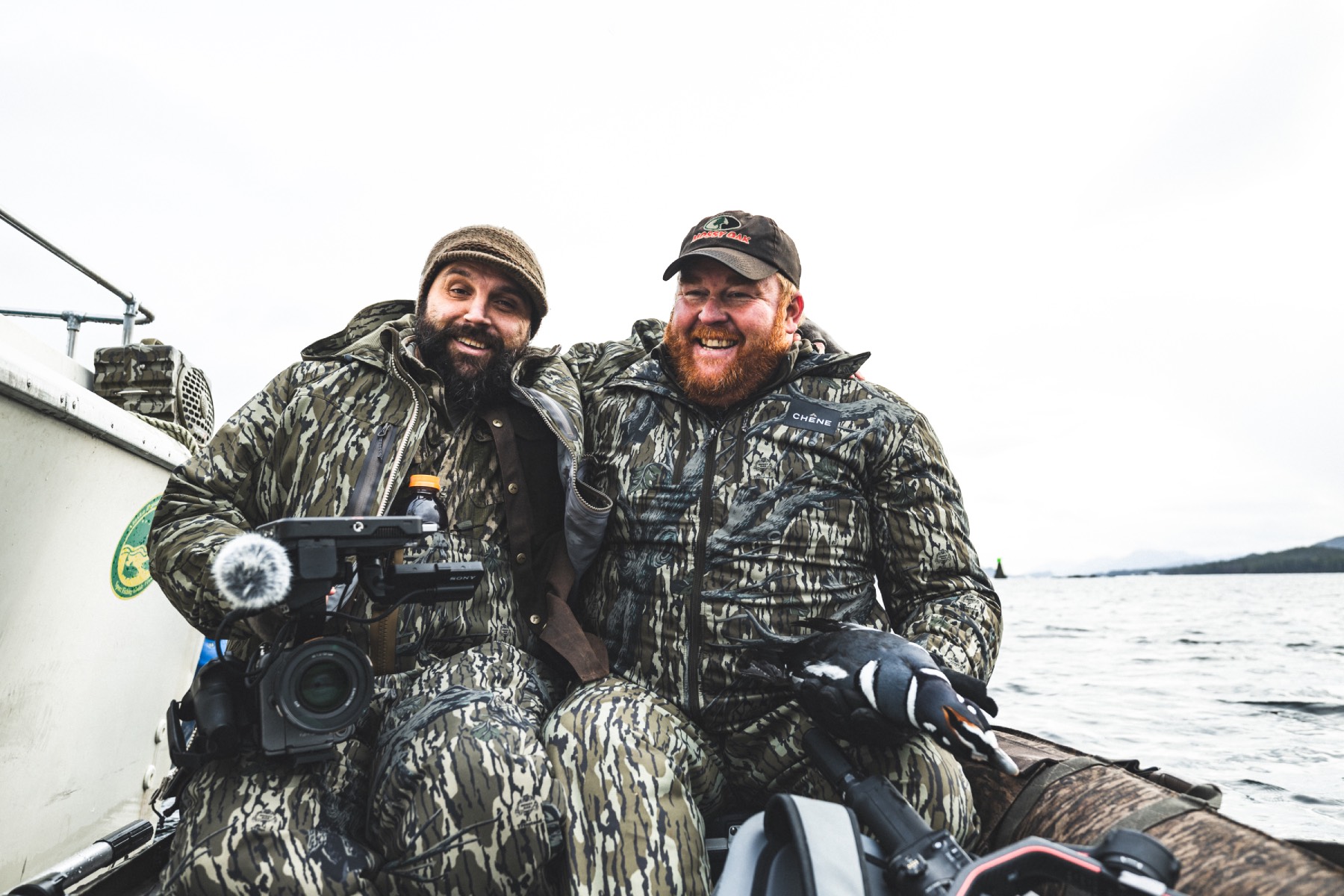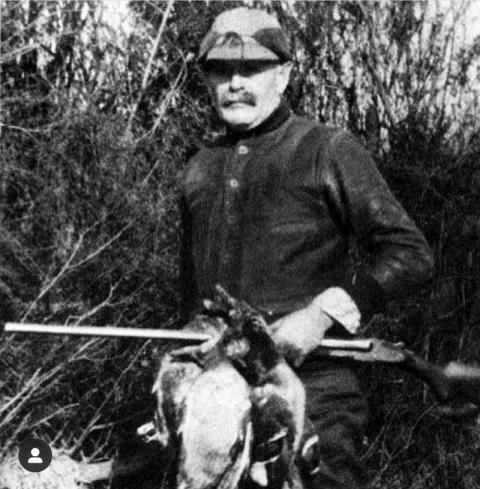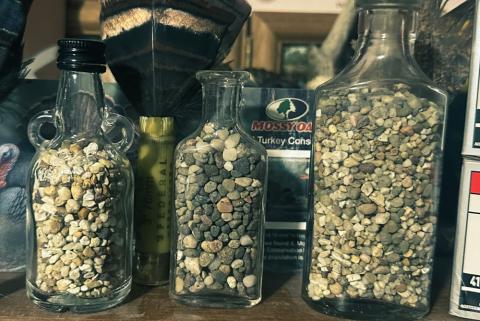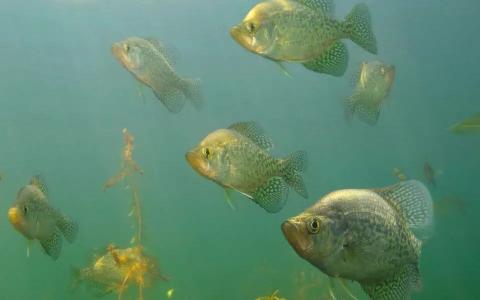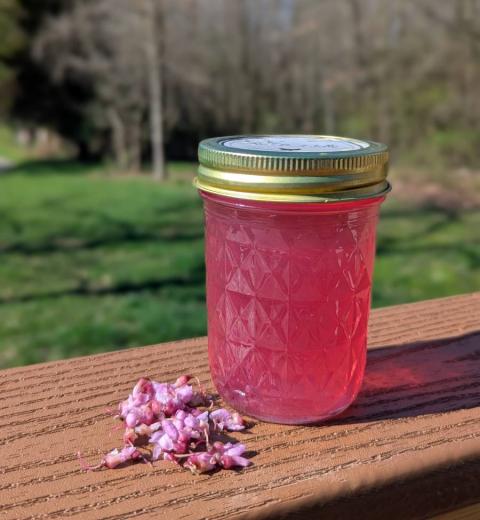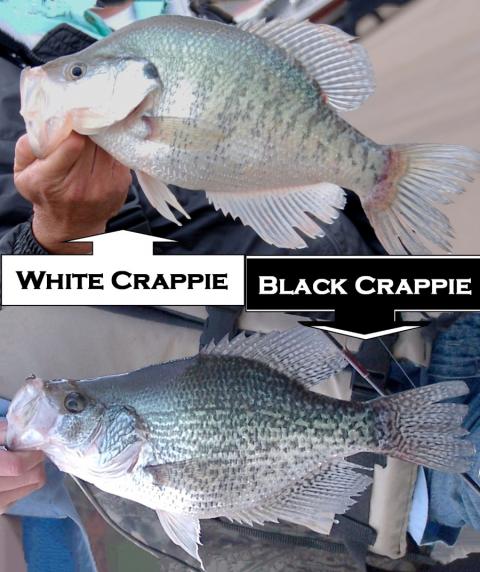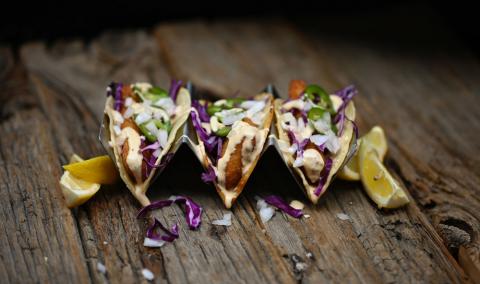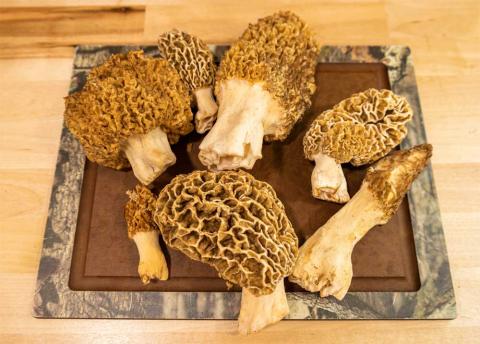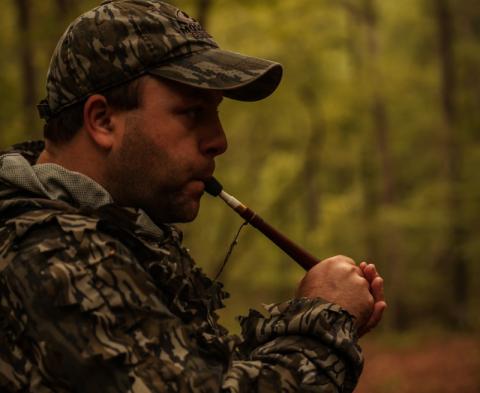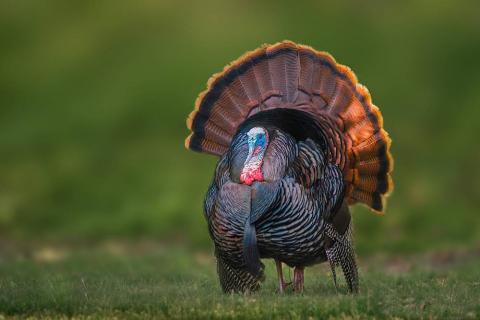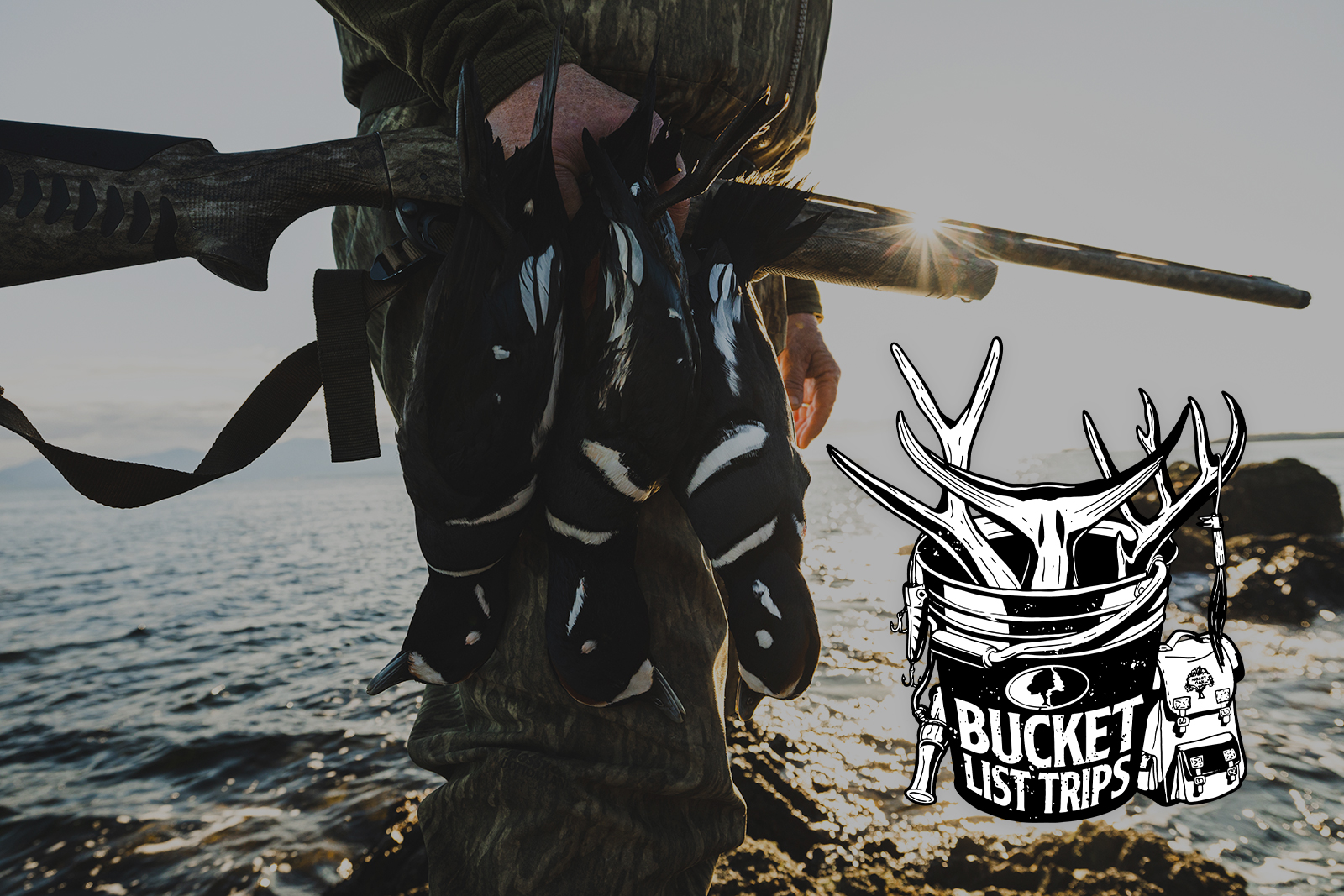
Story and photography by Mossy Oak's talented photographer Rob Kinney
The Alexander Archipelago is a 300-hundred-mile-long chain of islands lying off the southeastern coast of Alaska. Amidst the dense evergreen forests and rapid tides of the fjords you’ll find some of the most wild and most beautiful duck hunting you can imagine. Thousands of miles away from home, new friends become “instant old friends” around the shared bond of waterfowl.
My favorite trips almost always start with “wouldn’t be cool if…” The answer is almost always and emphatically “yes,” but seldom do all the pieces fall together to make it happen. This time, all of them did.
Back in August of this year, my friend Jared Lewis from Apex Ammunition asked if I wanted to join him and a father-son duo, Mike and Craig Rozier, to photograph and document a sea duck hunting trip to Ketchikan, Alaska. There, we would meet longtime guide Jeremiah Brooks from Ocean State Outfitters and hunt for four days. The target species? Barrow’s Goldeneye and Harlequin Ducks but we’d likely have opportunities for Surf Scoters, Common Mergansers, and Red-Breasted Mergansers as well. I had always dreamed of going to Alaska. Chances like these don’t come every day and it was one that I could not pass up.
Ketchikan bears the moniker of “Alaska’s First City,” not necessarily because it was the first city founded in Alaska but because it is the first major city that you come across in extreme southeast Alaska and is part of the Alexander Archipelago. The Alexander Archipelago is a 300-hundred-mile-long chain of islands lying off the southeastern coast of Alaska. Amidst the dense evergreen forests and rapid tides of the fjords you’ll find some of the most wild and most beautiful duck hunting you can imagine.
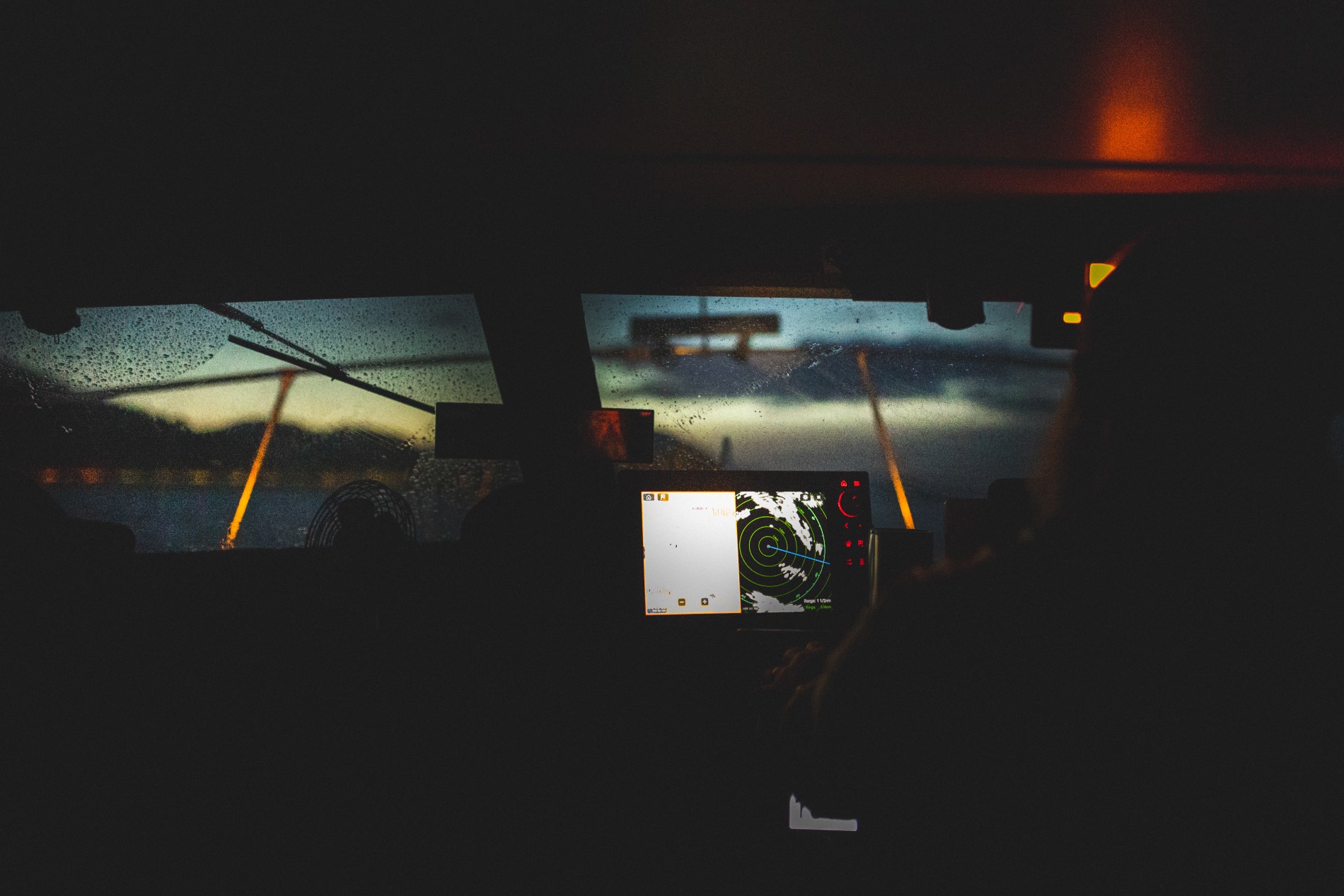
Day 1
The smell of salt air, the sounds of fishing boats groaning and shifting in their slips, and the cold, damp wind cutting across my face told me that this morning’s duck hunt was sure to be unlike any other I had ever experienced. Boarding the 25-foot cabin cruiser, the Fowl Catch, and tying off the inflatable skiff onto the side of the boat confirmed it.
We pushed off in the pre-dawn hours and made our way slowly out the “Narrows,” with Jeremiah at the helm. A far cry from the 4:00 AM blast off in the Arkansas public woods our initial departure was slow, painfully slow. Our progress stymied by fog and poor visibility. Jeremiah explained that running wide open in the dark here in Alaska was not something you did if you wanted to come home.
The fjords around Ketchikan are notorious for having extremely strong and swift tides, sometimes swinging as much as 15-20 feet in a morning. The tides are known to lift trees blown down trees on the edge of the forest and float them into the fjords. These trees, some of them in excess of a hundred feet tall and four feet in diameter, will become water-logged and float just below the surface unseen in the dark and present a tremendous hazard to any vessel on the water.
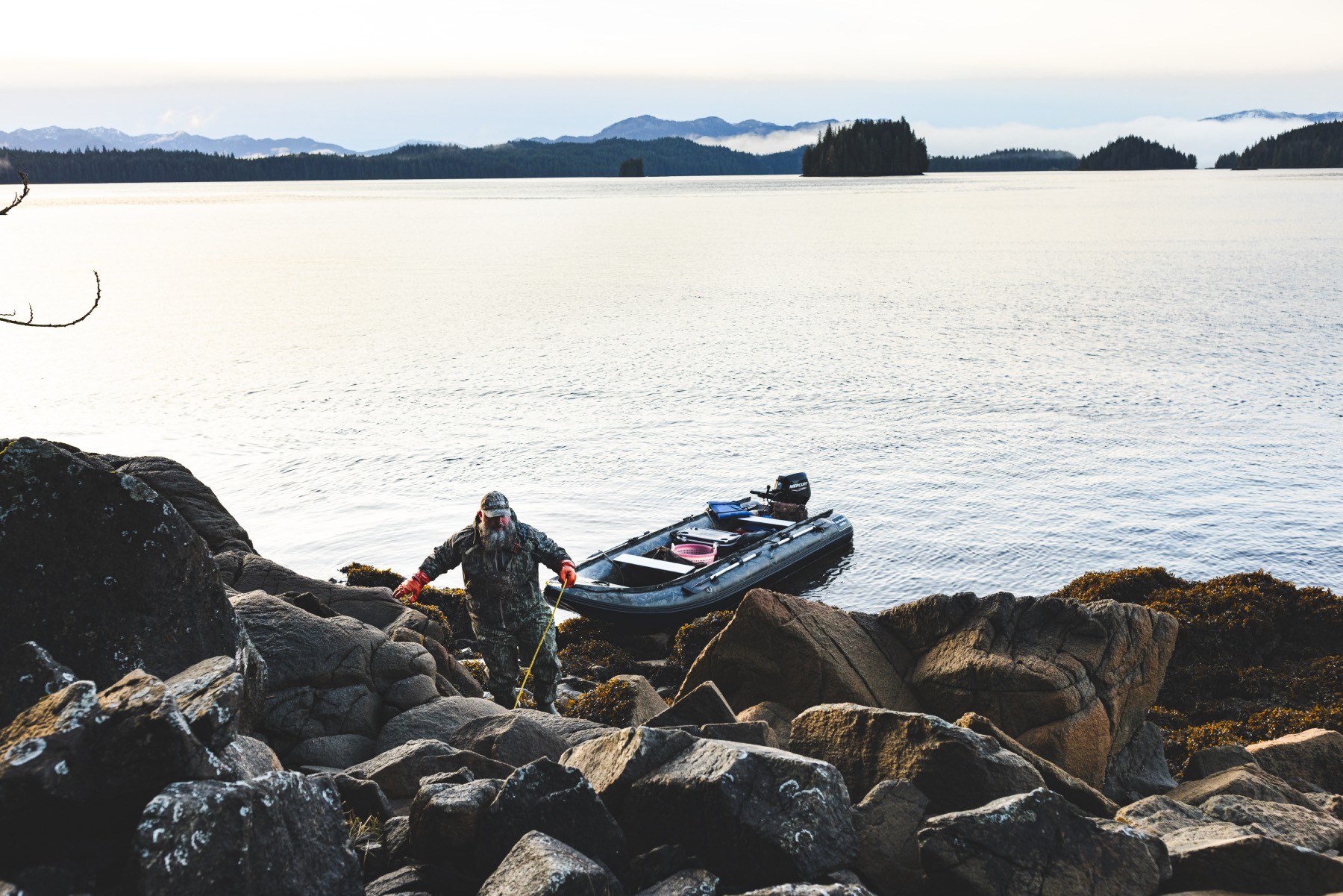
Our patience in the early going was rewarded, however, when the rising sun revealed to us what low cloud cover obscured from view the night previous as we landed in Ketchikan. To my awe, mountains appeared all around us, snow-capped and brilliant white in the blue light of the early morning sunlight. We truly would be hunting were where the mountains meet the water.
After an hour or so run out to where we would be hunting that morning, Jeremiah cut the motors and dropped the anchor…and kept dropping the anchor…and still paid out more line for what felt like an eternity until it met the bottom. Only sixty or so yards from shore and we were already in excess of 500 feet of water, a startling realization. Back home, we were struggling to catch and keep water and exchanging texts with friends over a promised half-inch of rain. Here it seemed that all they had was water!
That first morning we were set to hunt Barrow’s Goldeneye. Goldeneye are primarily distributed to the pacific northwest for a majority of the year and can be found as far inland as Colorado and in pockets of Nova Scotia and widely in the North Atlantic. These divers are best known for their vibrantly yellow-gold eye and their deep purple-green head, white cheeks, and striking black and white plumage.
Barrow's Goldeneye Call
We carefully piled into the inflatable skiff and motored to the rocky shore and settled in amongst the large granite boulders on the beach at low tide as Jeremiah unwound a long line of decoys. No sooner had Jeremiah tied the skiff to a tree branch than we heard the unusual but unmistakable sound of duck’s wing beats rapid against the wind. The sound was different, a whirring tittering sound but it made your heart lurch just the same as when a group of mallards flutter through the treetops or over top of layouts before shooting light. “Get ready, boys.” The fluttering and whistling continued as they swung into sight low around the rocky point and the shot was called.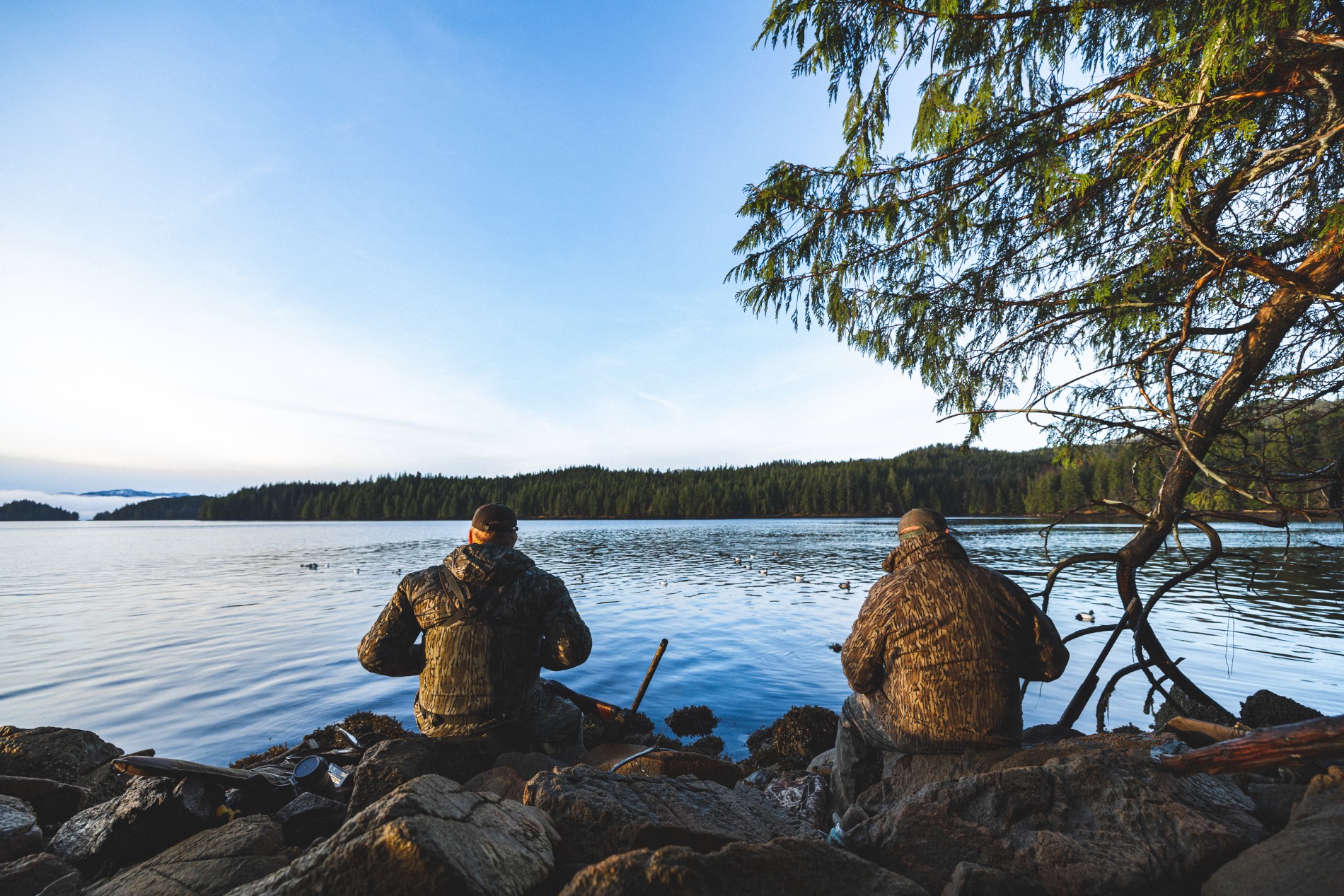
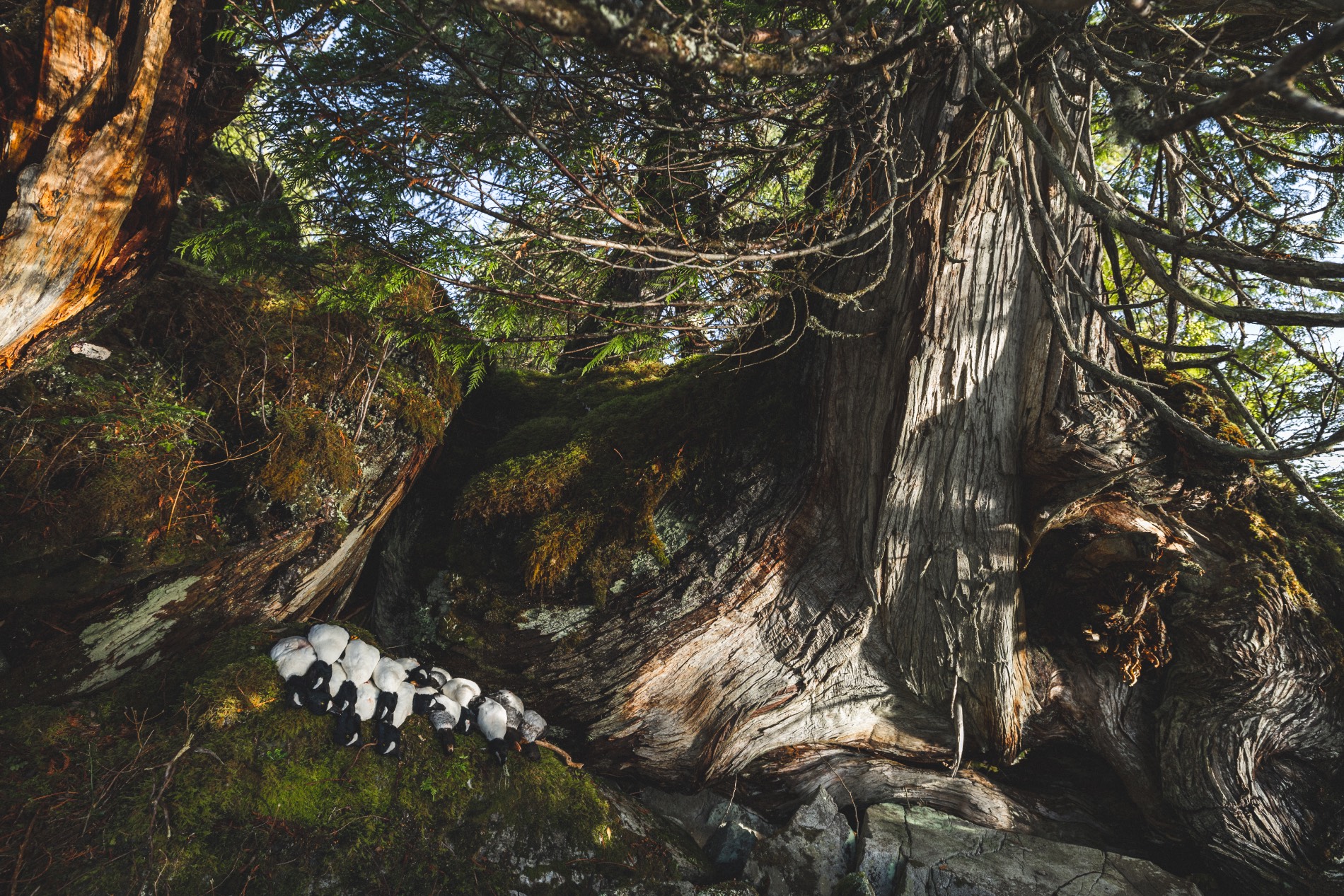
When the first shots rang out, an echo you wouldn’t belive coursed throughout the fjord in stupendous fashion. This was no ordinary echo but a wall of sound bouncing in all directions reverberating from cove to cove with will of its own. With the silence broken, the skies came alive. Hundreds and hundreds of birds took to the sky and traded from cove to cove. When they saw our decoys, groups of 5-10 broke off on a vector, straight for our decoys. Each shot echoed more pronounced than the previous.
It didn’t take long. Soon we had all shot our limit and were sitting back in the cabin of the boat eating hot soup made by Jeremiah’s wife and talking and laughing as we replayed the morning’s events in every detail.
Finally, duck season (for me) had begun in earnest and the world made a little bit more sense.
Day 2
The next morning, we were after the Harlequin Duck. Harlequins are, in my opinion, one of the most visually stunning and beautiful ducks out there. Their plumage is a wonderful contrast of greyish-blue with patches of orange beneath their wings and vibrantly white bands contained by deep black bars. Harlequins are distributed to the extreme northwest and northeast of North America and are particularly fond of rough water and tidal rocks where they feed on mussels and other invertebrates.
Harlequin Duck
After a quick meeting below deck, we broke into two groups. Jared and Craig were in one group and Mike and I made up the second. Jeremiah, Mike, and I climbed into the skiff and took off to a massive outcropping of rocks separated from the shore by about 100 yards by a shallow, knee deep channel. A great pile of rocks towered behind us. Jeremiah handed us a radio and instructed us to climb up the rocks as the water rose and to call him when we thought we were running out of real estate. It was hard to imagine that these rocks, some 15 to 20 feet above our heads, would soon be covered by the rising tide. Any doubt would soon be removed.
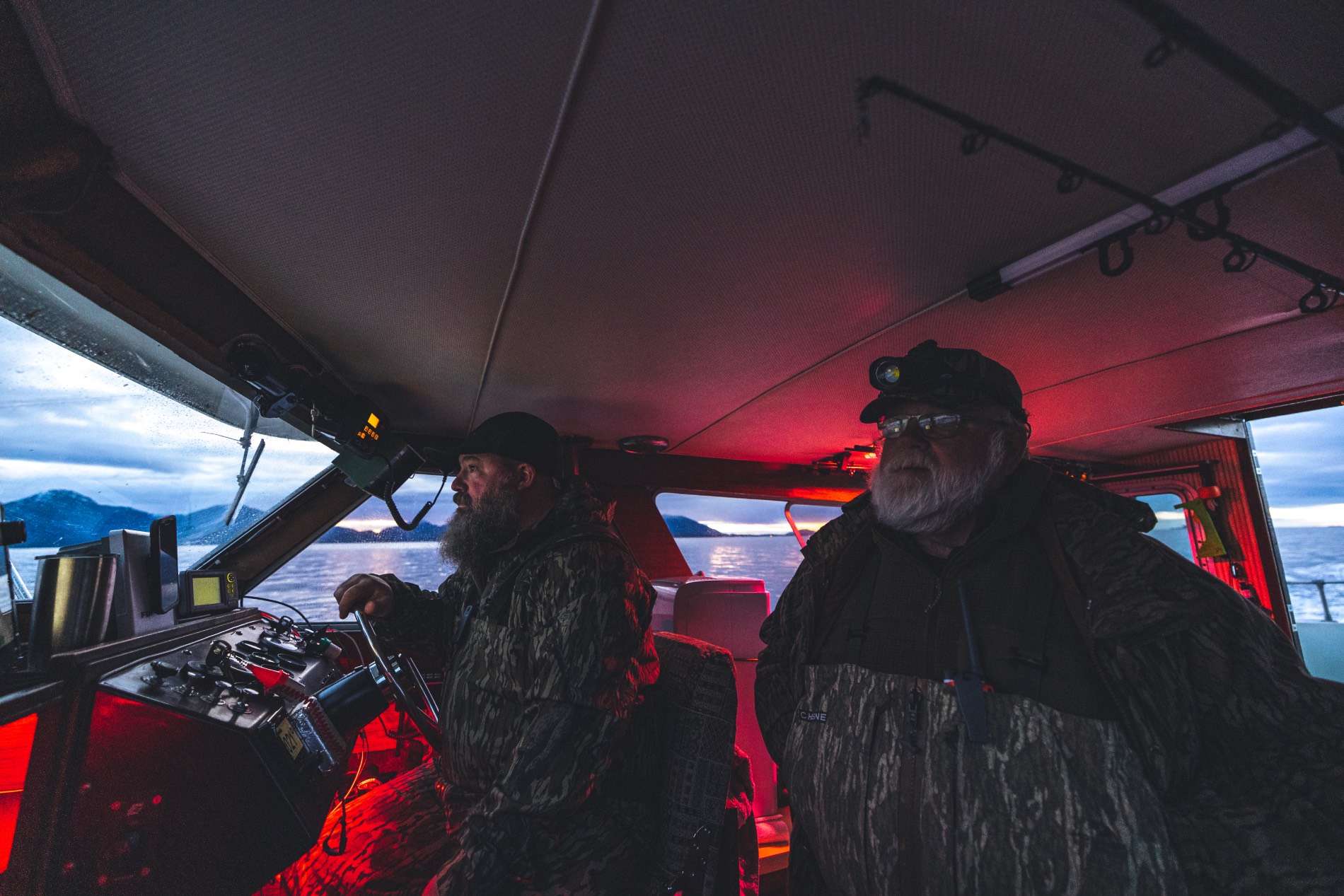
Harlequins, I came to understand, are hard flying and “spooky.” Think wood ducks with jet packs. So, tucked into the large, barnacle covered rocks, we had a hard time seeing the Harlequins coming over our back shoulder (immediately to our east and looking directly the sun.) Jeremiah came to pick up Mike and take him to another spot so that we could cover a larger area, and where Mike would have a better chance of seeing the ducks working. Leaving me alone with my shotgun and a string of decoys, he told me to load my gun and be ready if any swung in. Didn’t have to tell me twice.
I came into this trip, completely prepared to not fire a shot and content to take photos. I would, however, be lying if I said I wasn’t hopeful to be passed a gun or get a chance take a few shots. I couldn’t pass up on the chance to shoot Harlequins in a place that I might never have the chance to visit again.
The tide rose.
A few minutes after Mike and Jeremiah fell from sight, I heard what can best be described as either an American Wigeon after having downed an espresso shot or a child running amok while wearing squeaky shoes. A flock of Harlequins! I picked them up just behind me and off my left shoulder. They flew quartering away before turning sharply to follow the natural line of the channel. I watched with amazement as they made a hard bank directly towards me and over the decoys squeaking and whistling as they flew.
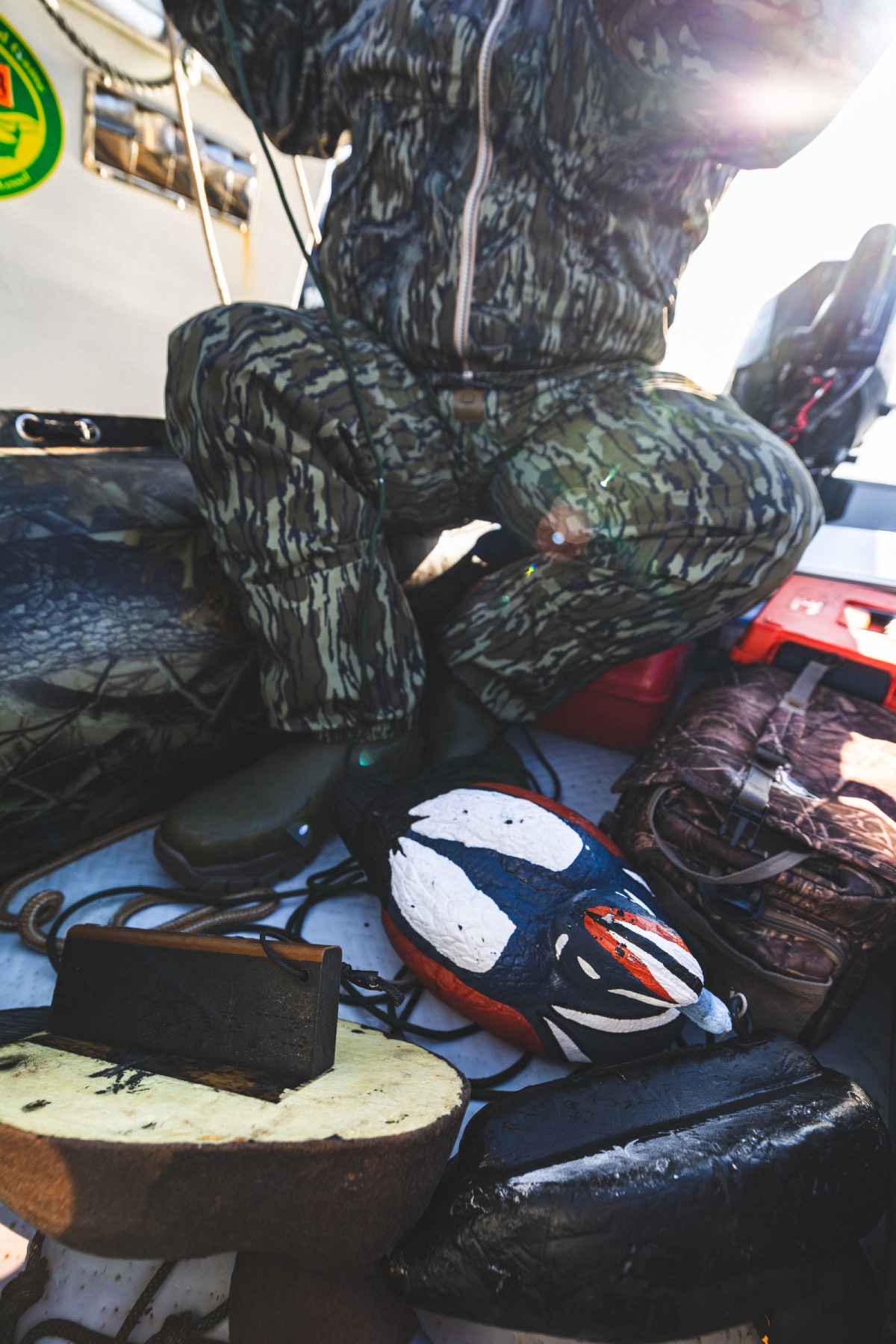
I didn’t even think to shoot at first. I just watched them splashing and diving into the water looking for their breakfast. It was overload for me really. I couldn’t believe that just in front of me swam a group Harlequins, a duck that I thought that I would never be fortunate enough to see with my own eyes.
These ducks picked up and left but were soon replaced by a three pack of Harelequins (two drakes and one hen.) This time I was ready and took a shot at the lead duck. Three ducks fell. I was content to stop shy of my limit (4) and watched as still more ducks swung through the channel, squeaking as they came.
The tide rose.
Mike rejoined me after taking a few Harlequins of his own. We scurried still higher up the rocks. The sun now risen, the morning flight of Harlequins had largely stopped and we paused for a moment just to take in our surroundings. In front of us was a thick evergreen forest that grew all the way to the water. Between us and forest lay a narrow channel, no longer shallow owing to the rising tide. All around us were large, rough granite boulders covered in sharp barnacles and strewn with starfish and other tidal-pool-dwelling creatures hiding amongst little pockets of water waiting for the return of the tide. Behind us in the distance were large, snow covered mountains, and all around us was the choppy water of the bay. We could see groups of Surf Scoters trading back and forth in the distance. It was one of those moments when you put the gun and the camera down, take a sip of coffee, and just breathe it in. It’s pretty wild where a duck can take you.
The tide rose again and the shallow channel from a few hours ago would now be well over my head if I attempted to wade it. We climbed, still higher up the rocks. All at once, the massive outcropping of rocks that towered over us earlier that morning looked like a scattered assortment of individual boulders. This went on for another hour or so until Mike and I were each standing on our own rock, each the size of a small car. While that may seem large, when just a few hours prior you beheld a many football fields long and 15 or so foot high rock face, it is startling. I wouldn’t say that I was afraid, per say, but I can say I was ready to get off that rock and back to the boat. We got on the radio and called Jeremiah to get us in the skiff.
The tide rose.
By the time that Jeremiah got back to us, Mike and I were now standing on small rocks about the size of a large coffee table each. We were laughing about our predicament and about shots taken this morning, good and bad, and enjoying the awe-inspiring scenery around us. I was glad to be off that rock.
Twenty or so minutes later, the rock was completely underwater. I left it with a greater and fuller appreciation for the power of water and a reminder that Alaska is still a wild and dangerous place if you lack the skill or the preparation to navigate these waters.
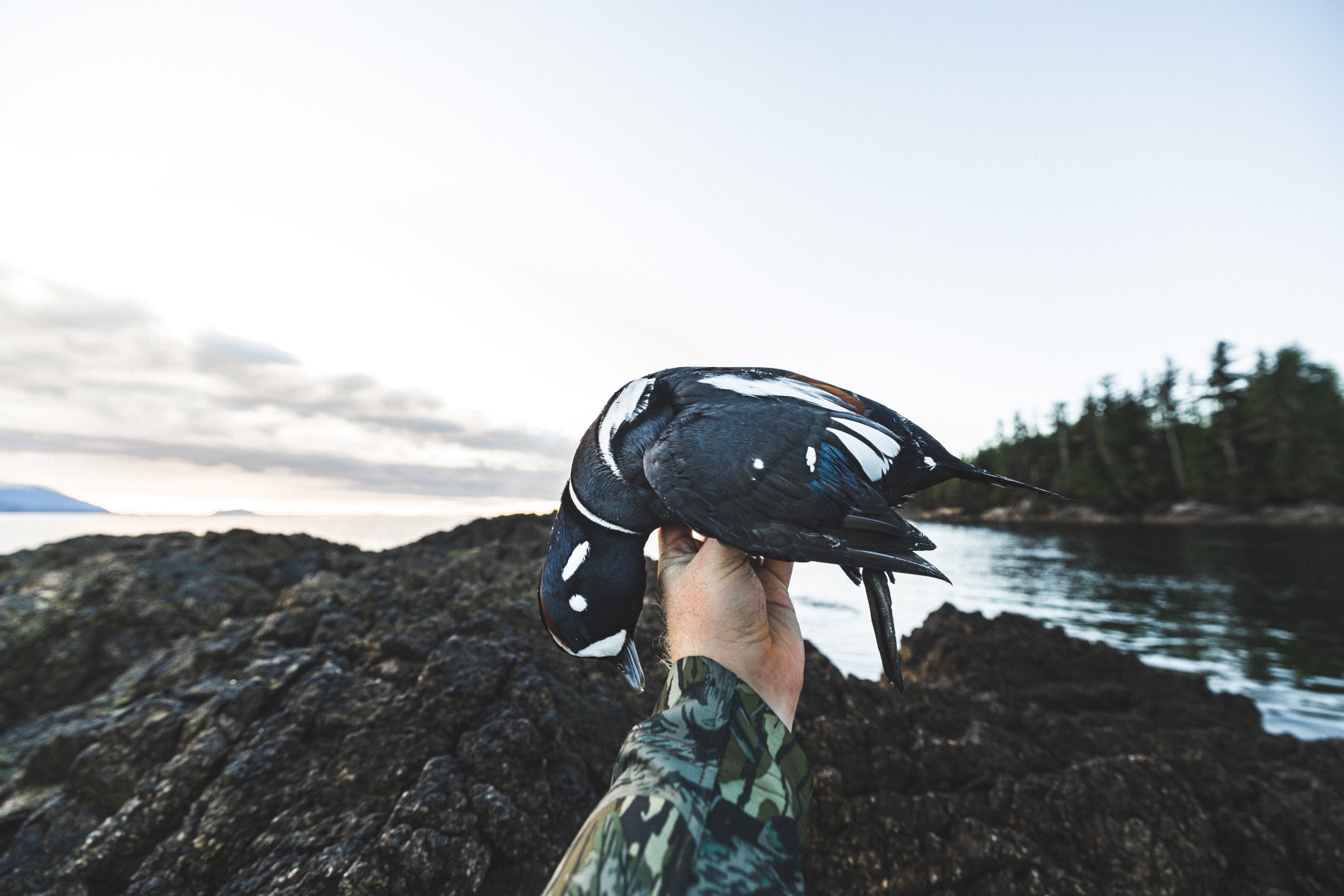
Day 3
Our third day further drove the point of how rough Alaska can get. Contrary to the weather forecast, winds in excess of 40 mph ripped through the bay and created conditions in the fjords that were unsafe for passage, let alone hunting. We took that morning to go into town and have breakfast at a local diner and wait for an opening in the weather.
One finally came around lunch time and we set out to try to get Craig his Harlequin. Jeremiah and Craig took the skiff out and left out for a narrow cove to set up in. For the moment, the weather was full sun and beautiful but we could see dark skies in front of us. Some have said that, “if you don’t like the weather in Alaska, wait a minute” and it will change. Sleet and ice fell pelting us on the back deck of the cruiser as we watched through our binoculars to see if Craig and Jeremiah were having any luck.
The squall continued and Craig and Jeremiah remained on the water, resolute to come back with his Harlequin. Ice and snow fell and the wind howled as we bobbed on the water back on the boat. Soon the two returned with a beautiful drake Harlequin.
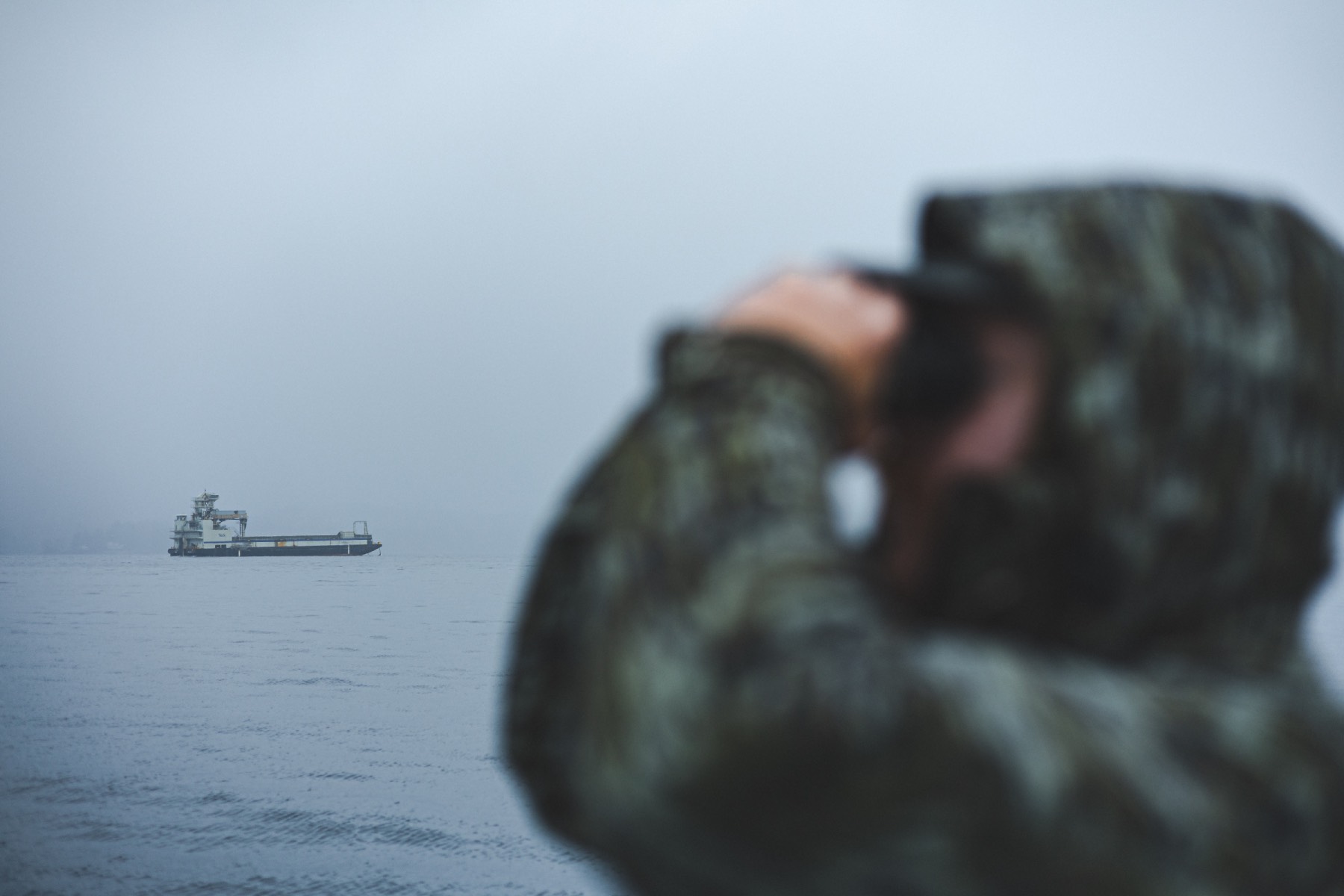
Day 4
Our final morning in Ketchikan was a morning that I will never forget. We ran out further south than we did the first morning, pushing into a narrow pass within the fjords between two mountains. As Jeremiah strung decoys and set up for the morning we were met with one of the most beautiful sunrises I’ve ever seen, vibrantly pink and yellow and red. Rain fell through the breaking daylight revealing a rainbow, seals swam among the decoys, and goldeneye flew over ahead as we set up.
The action that morning was just as fast and fun as the first morning, with goldeneye swinging into our position from the northeast on a line straight for our decoys. Mike and Craig shot true and soon there were several birds on the water to pick up. In Alaska, you don’t leave the shore to wade out to pick up birds, however close they may be. The rocks beneath your feet are deceptive and will totally drop out from beneath you. There’s no gentle slope to depth. It will go from two feet, to 15 feet, to 60 feet, to 500 feet in the blink of an eye.
Jeremiah and I jumped in the skiff and drove around picking up birds from the water. We wanted to beat the curious seals to them as well as pick them up before they were carried off by the tide. While picking up birds, we heard a clamor from the rocks and saw hurried pointing. A call come through on the radio and we could just make out “WHALE – in the decoys!!”

A whale had just come up off the end of the decoys and spouted in front of the guys on the rocks. Because we didn’t see it, we were unsure what species of whale it was. I was secretly hopeful that it was NOT an Orca. Jeremiah and I swung round in the skiff, headed to the area where we thought the whale would spout once more. We cut the engine and floated, listening for the surfacing whale. A float plane murmured in the distance and we could hear the sounds of goldeneye flitting above. Everyone at this point was much more engaged in pursuit of a sight of the whale than concerning ourselves with goldeneye.
Then we heard it, some 60-100 yards off the bow of the boat. A juvenile humpback whale spouted hurling a large puff of air and salt spray into the air. We drifted there, still and listening. The humpback gave one last puff and its large fluke came up out of the water, announcing its dive to depth. It was one of the coolest things that I’ve ever seen. Two more goldeneyes swung around our boat and towards the rocks where our guys lay concealed. We waited to hear the shot. We didn’t have to wait long and were met with the cascading echo of the shot. Those two rounded out or limit and we headed for shore.
We were in no hurry to leave that place and instead made a small afternoon camp above the rocks. There’s something about a good duck hunt in a beautiful place with folks you enjoy and a warm meal to share. We sat there for a few more hours and soaked in the scenery and traded stories. It will be a morning that I will not soon forget.
This is what waterfowl is all about; the community. Waterfowl is always about so much more than ducks. It’s about who you’re with and the beautiful places we’d never get a chance to see were it not for these incredible birds.

Despite the resounding differences between sea duck hunting and shooting mallards in the trees or bottoms back home, the thrill and joy of the hunt and the company is the same. You trade hugging an oak tree for hunkering down against a seaweed and mussel-covered block of granite and watch the show unfold until the shot is called. Guns crack and birds fall, as graceful in their passing as in flight. Then you hold, with childlike wonder, these curious and vibrantly plumed birds inspecting them with the same enthusiasm as you did with your first mallard.
Alaska has always been a place I have wanted to go but never had the chance. From reading London and Muir, Alaska had grown in my eyes to almost mythical proportions. Nothing can prepare you for what you will see and experience in Alaska. Photos and video may cause you dream further and cause you to wonder but until you stand on the back of a boat and look back across its wake and as far the eye can see is either mountains or water you cannot understand. Thousands of miles away from home, new friends become “instant old friends” around the shared bond of waterfowl.
For so long as I have known that Alaska existed, I wanted to go. Now that I have been, I should like to go back, and soon.
